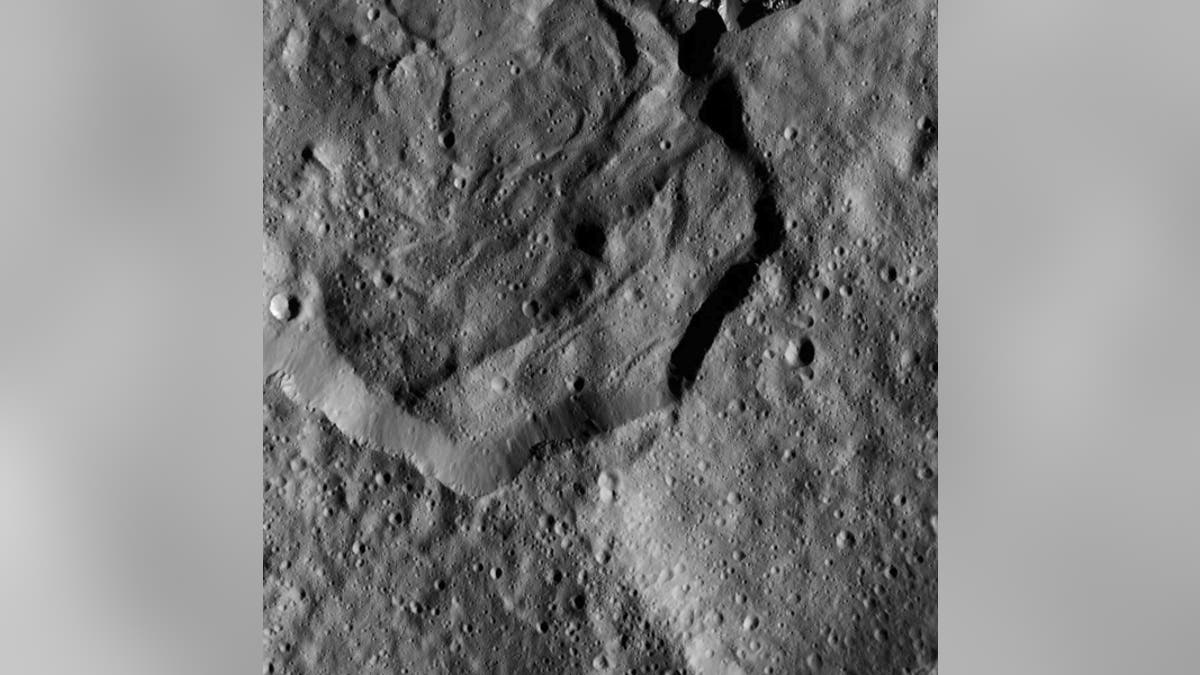
This image from NASA's Dawn spacecraft shows Kupalo Crater, one of the youngest craters on Ceres. (Image Credit: NASA/JPL-Caltech/UCLA/MPS/DLR/IDA)
NASA has released stunning images of Ceres that show the dwarf planet’s surface in incredible detail.
The space agency’s Dawn spacecraft took the images near its current altitude of 240 miles from Ceres, between Dec. 19 and Dec. 23 last year.
Related: Dawn spacecraft achieves Ceres orbit, makes history
Scientists are now studying a fascinating image of Ceres’ Kupalo crater, which measures 16 miles across. “The crater has bright material exposed on its rim, which could be salts, and its flat floor likely formed from impact melt and debris,” explained NASA, in a statement released Tuesday. Researchers will be examining at whether this material is related to the "bright spots" found on Occator, another of Ceres’ craters.

(This image from NASA's Dawn spacecraft shows part of Messor Crater (25 miles or wide), located at northern mid-latitudes on Ceres. (Image Credit: NASA/JPL-Caltech/UCLA/MPS/DLR/IDA))
Ceres lies between Mars and Jupiter. The dwarf planet has an average diameter of 590 miles and is the largest body in the main asteroid belt.
Related: NASA’s Pluto mission in pictures
Dawn successfully entered Ceres' orbit on March 6 2015, making history as the first mission to achieve orbit around a dwarf planet
Sicilian astronomer Father Giuseppe Piazzi spotted Ceres in 1801 and was the first object discovered in our solar system’s asteroid belt.
Related: Stunning Perseid meteor shower pictures
Initially classified as a planet, Ceres was later called an asteroid, and designated a dwarf planet in 2006.
The spacecraft will remain at its current altitude for the rest of its mission, and indefinitely afterward, according to NASA. The end of the prime mission will be June 30, 2016.
Related: Supermoon lunar eclipse in pictures
A host of organizations are involved in the Dawn mission. UCLA, for example, is handling overall mission science, while the German Aerospace Center, the Max Planck Institute for Solar System Research, the Italian Space Agency, and the Italian National Astrophysical Institute are involved as international partners.
The Dawn spacecraft was built by Dulles, Va.-based Orbital ATK.
